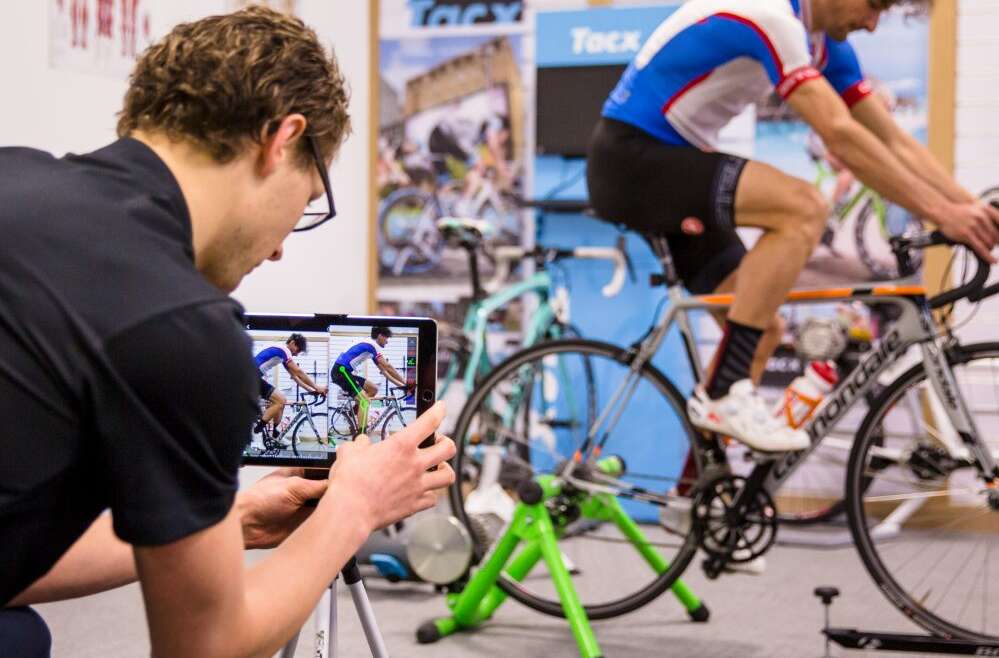In a follow up from our previous post, tips for training in the heat, this article will explore the aerobic fitness adaptations that occur from consistently training in hot conditions.
Sweat Concentration
Once the body has been exposed to 1-2 weeks of aerobic exercise in hot conditions, the concentration of sodium chloride (salt) in the sweat starts to change. Sodium chloride is crucial to the body as it helps with such things as muscle contractions, nerve conduction and fluid balance. In response to regular training in warmer conditions, a hormone call aldosterone is released by the adrenal gland, which promotes reabsorption of sodium chloride from the sweat back into the body before it is released from the skin. This allows for retention of more sodium chloride, which decreases the chance of, and time it takes, to cause an electrolyte imbalance. This imbalance can lead to cramping, fatigue and decreased performance.
Increased VO2 max and Lactate Threshold
A study by Lorenzo et al. (2010) took 20 trained cyclists and split them into a hot environment training group and a cool environment training group. The cyclists were tested for various aerobic measurements at baseline and then the two groups were given a 10-day training program. They were then re-tested in the same parameters at the end of that period. Staggeringly, after just 10 days, the heat adaptation group displayed an increased VO2 max of 8% in hot conditions and by 5% in cool conditions. The heat acclimatisation group also demonstrated a 5% increased power at lactate threshold in both hot and cool conditions.
Heat Dissipation
In a separate study by Lorenzo et al. (2010), they took a group of 20 trained cyclists and observed the changes to the vascular supply of the sweat glands after a 10-day endurance training period in hot conditions. They found after the heat adaptation period the cyclists exhibited changes to the skin microcirculation and sweat gland apparatus, thus allowing increases in sweat responses. This adaptation improves the body’s ability to dissipate heat and can explain some of the improvement in endurance performance in hot conditions when heat-adapted.
How to acclimatise yourself and how long does it take?
It takes around 1-2 weeks to fully acclimatise to endurance training in the heat (Racinais et al., 2015). Adaptations occur quicker highly trained athletes as oppose to untrained individuals. It is also said these adaptations will last for about 2-4 weeks, depending on the individual (Racinais et al., 2015).
The recommendation for training load is to complete at least 60 minutes of light, moderate or hard continuous exercise daily over a two-week period in a heat that will produce a moderate-to-high sweat rate. If you are training for an event in the heat (e.g Hawaiian Ironman), the temperatures you are training should be similar or equal to that of the event.
Hydration when adapting to heat
Great care must be taken when attempting to adequately hydrate whilst adapting to the heat. As stated in our previous article, drinking to thirst should keep most athletes well hydrated enough during continuous exercise. So, when adapting to the heat, one will likely drink more to compensate. It is especially important to keep well hydrated when you first start your heat acclimatisation training, as your body has not adapted to the rigours of the heat yet. Most athletes doing heavy training in warm conditions will also opt for added electrolytes such as tablets or drinks containing sodium chloride, magnesium, potassium and calcium. It is also important to rehydrate once exercise is over; it is recommended that you should drink slowly over the space of 1-2 hours to get back to your pre exercise session weight. It is also recommended that you consume some carbohydrates and protein to assist with this.
Cooling Strategies
For maximum performance, it is advantageous to use cooling strategies before, during and after competition and training. However, if your goal is to adapt to a hot environment, you may want to save a lot of these strategies for race day and race simulation training. Having said that, it does not mean your goal should be to overheat yourself during training. You also may want to consider cooling strategies post-exercise to get your core temperature back to baseline. Here, it is crucial to cool yourself slowly; if you cool too quickly (e.g. jump straight into an ice bath) this can have the opposite effect, because your body goes into heat conservation mode. Some good strategies to cool post-exercise include sipping cold drinks, wearing an ice vest, sitting in a cool room and having a cool (not cold) shower. For more information on cooling strategies click here.
In summary, heat adaptation to endurance exercise can have significant improvements on endurance performance in both hot and cool conditions through various mechanisms. It is important to do it safely and slowly; always stay adequately hydrated and be sure to consult a medical practitioner if you are unsure whether adapting to training in hot climates is appropriate for you.
References
Lorenzo, S., Halliwill, J. R., Sawka, M. N., & Minson, C. T. (2010). Heat acclimation improves exercise performance. Journal of Applied Physiology, 109(4), 1140-1147.
Lorenzo, S., & Minson, C. T. (2010). Heat acclimation improves cutaneous vascular function and sweating in trained cyclists. Journal of Applied Physiology, 109(6), 1736-1743.
Racinais, S., Alonso, J. M., Coutts, A. J., Flouris, A. D., Girard, O., González‐Alonso, J., … & Nassis, G. P. (2015). Consensus recommendations on training and competing in the heat. Scandinavian journal of medicine & science in sports, 25(S1), 6-19.
About the Author:
Dr. Nicholas Tripodi is a Co-director and Osteopath at the Competitive Sports Clinic located in the Essendon District. Nicholas has particular interests in sports injuries, exercise rehabilitation and running and cycling analysis.


